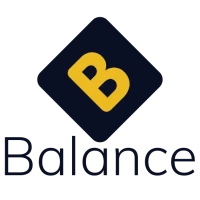Self Assessment for Freelancers: What You Need to Know
If you’re a freelancer in the UK, understanding and managing your self assessment tax obligations is essential. Whether you’re just starting out or have been self-employed for years, getting your tax return right means avoiding penalties, maximising allowable expenses, and staying in control of your income.
This post goes someway to explaining everything freelancers need to know about self assessment in the 2025/26 tax year – including who needs to file, what counts as allowable expenses, and how to track your income accurately.
What Is Self Assessment for Freelancers?
Self Assessment is the system used by HM Revenue & Customs (HMRC) to collect Income Tax from individuals whose income isn’t taxed at source. Unlike employees who have their tax automatically deducted via PAYE, freelancers and self-employed individuals must calculate, report, and pay their own tax.
This includes:
- Sole traders
- Freelancers and contractors
- Self-employed professionals
- People earning untaxed income (e.g. from renting property, dividends, or side hustles)
Self Assessment involves submitting a tax return to HMRC each year detailing your income, expenses, and any tax already paid. The return allows HMRC to calculate your tax liability or for you to calculate it yourself using HMRC’s online system or accounting software.
If you’re new to self-employment, Self Assessment may seem daunting, but it’s manageable with the right records and planning. More importantly, it ensures you’re legally compliant and avoid penalties or interest charges from HMRC.
Do Freelancers Need to Register for Self Assessment?
Yes. In the UK, freelancers are classed as self-employed for tax purposes, which means you must register for Self Assessment with HMRC once your self-employed income exceeds £1,000 in a single tax year (before expenses).
This threshold is part of HMRC’s trading allowance, and it applies even if you:
- Also have a job and already pay tax through PAYE.
- Earn freelance income alongside other work, such as dividends or rental income.
- Are only freelancing on a part-time or occasional basis.
If your total self-employed income goes over £1,000, you must register for Self Assessment to declare it and pay any tax and Class 2 and Class 4 National Insurance contributions due.
Key Deadlines
The deadline to register for Self Assessment is 5 October following the end of the tax year in which you started freelancing.
Example: If you begin freelancing in July 2025, that falls within the 2025/26 tax year (which ends on 5 April 2026). You must therefore register by 5 October 2026.
Failing to register on time can result in penalties or interest on unpaid tax, so it’s important to act as soon as you start earning freelance income.
How to Register
You can register online through your Government Gateway account by completing HMRC’s Self Assessment registration form.
Once you’ve registered, HMRC will issue a Unique Taxpayer Reference (UTR) – a 10-digit number used to identify you and your tax records. You’ll need this to file your annual return, make payments, and communicate with HMRC.
Tip: Keep your UTR safe. You’ll need it for every Self Assessment you file, and it can take up to 10 working days to receive it by post once you’ve registered.
Further Reading
For more guidance on staying compliant as a freelancer:
- How to Register for Self Assessment – GOV.UK
- Understanding Class 2 and Class 4 National Insurance Contributions
Key Self Assessment Deadlines for 2025/26
Keeping on top of HMRC deadlines is essential for freelancers. Missing a date can lead to automatic penalties, interest, and unnecessary stress – all of which are avoidable with a little planning.
The 2025/26 tax year covers income earned between 6 April 2025 and 5 April 2026. Below are the key dates to remember:
| Task | Deadline |
| Register for Self Assessment | 5 October 2026 |
| File paper tax return | 31 October 2026 |
| File online tax return | 31 January 2027 |
| Pay any tax owed (including Class 2 & Class 4 NICs) | 31 January 2027 |
| Second Payment on Account (if applicable) | 31 July 2027 |
Filing Options: Paper vs Online
If you file a paper return, it must reach HMRC by 31 October 2026. However, most freelancers now use the online Self Assessment system because it:
- Extends the deadline to 31 January 2027
- Automatically checks for common errors
- Calculates your tax liability in real time
- Allows faster confirmation and easier amendments
Tip: If you expect a tax refund, file early – HMRC will process repayments sooner, and you’ll have clarity on what you owe well before January.
Why Early Filing Matters
While the January deadline might seem far away, filing early has clear advantages:
- Avoid penalties and system slowdowns: HMRC’s online services experience heavy demand in late January.
- Spread your payments: Early filing gives you time to budget or set up a Time to Pay arrangement if needed.
- Spot errors early: You’ll have time to correct records and claim all allowable expenses before submission.
Tip: Use digital accounting tools such as The Balance App, Xero, or QuickBooks to track your income and expenses throughout the year – making tax season far less stressful.
Related Reading
How to Track Your Freelance Income
Accurate income tracking is the backbone of a successful Self Assessment. As a freelancer, you are legally required by HMRC to maintain proper financial records for at least five years after the 31 January submission deadline for each tax year.
Keeping clear, organised records not only ensures compliance but also makes it far easier to prepare your tax return, claim allowable expenses, and provide evidence in case of an HMRC enquiry.
1. Issue and Log Every Invoice
Maintain a complete record – digital or physical – of every invoice you issue. Each invoice should include:
- A unique invoice number (sequentially numbered)
- Client name and address
- Date issued and payment due date
- Clear description of services provided
- Amount charged and VAT (if applicable)
- Payment method and current payment status
Tip: Consistent invoicing demonstrates professionalism and helps avoid disputes over late payments. You can create compliant templates using HMRC’s invoicing guidance.
2. Use a Dedicated Business Bank Account
While sole traders and freelancers aren’t legally required to have a separate business account, doing so is strongly recommended. Keeping business and personal finances separate helps:
- Simplify bookkeeping and reconciliation
- Prevent errors when identifying taxable income
- Provide a clear audit trail if HMRC requests records
Consider specialist options such as Tide Business Banking or Starling Bank, both of which integrate easily with accounting software.
3. Leverage Accounting Software
Cloud-based accounting platforms make income tracking faster, more accurate, and fully compliant with Making Tax Digital (MTD). Tools such as Xero, FreeAgent, and QuickBooks allow you to:
- Automatically import and categorise bank transactions
- Reconcile invoices and payments
- Generate real-time profit and loss reports
- Track overdue invoices and client payment histories
For freelancers seeking a UK-focused, simple solution, The Balance App (developed by Accounting Wise) offers real-time insights, automated expense tracking, and digital record-keeping – perfect for staying compliant without the complexity.
4. Keep Backups and Audit Trails
Even if you use digital tools, it’s good practice to regularly export your data and store backups (securely and encrypted). HMRC may request specific records up to five years later, so retaining copies of invoices, bank statements, and digital summaries ensures you’re always covered.
Accurate income tracking isn’t just good business practice – it’s a legal requirement. Using proper systems from the start will save time, reduce stress at tax season, and demonstrate professionalism to clients and HMRC alike.











